Nexus 7 (2013) - Mini Review
by Brian Klug on July 27, 2013 12:54 AM EST- Posted in
- Tablets
- Snapdragon
- Qualcomm
- Android
- Mobile
- APQ8064
- Nexus 7
- Android 4.3
The real highlight of the new Nexus 7 is of course the much higher resolution display. At 1920x1200 the Nexus 7 is now the highest resolution 7-inch tablet. This new IPS panel is made by JDI (Japan Display Inc) and boasts better viewing angles, 30 percent more gamut than the previous one, and of course better dot pitch of 323 PPI. Alongside that the new Nexus 7 also doesn’t have the always-on dynamic brightness and contrast (NVIDIA Prism / smartdimmer) that many including myself found frustrating with the original Nexus 7. On the new version the equivalent functions are enabled only during full screen video playback. This is a huge improvement since with the feature enabled on the previous Nexus 7 I always felt that greens were undersaturated and some dynamic range clipped.
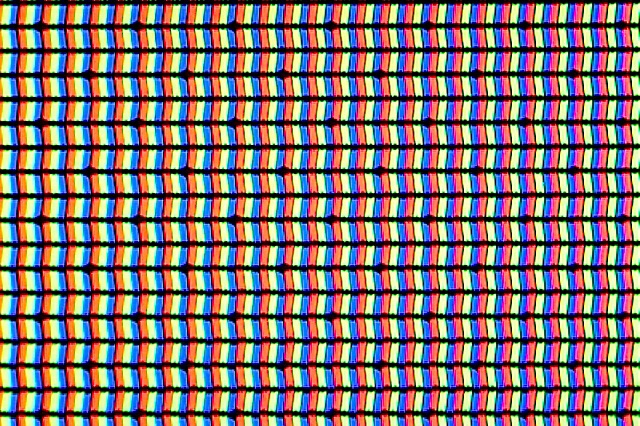
I did a lot of asking around about how Google calibrates its panels, and was told that in the case of the Nexus 7 there are two stages. The first is the calibration done by JDI on the panel at a high level, the second is an additional calibration at time of manufacture, per device. This sort of thing is relatively standard, but I’ve always been curious about what stages cost extra money – certainly it’s a baseline expectation for the panel supplier to supply a close-enough LUT, but getting Delta E even lower I’m told requires additional expenditure.
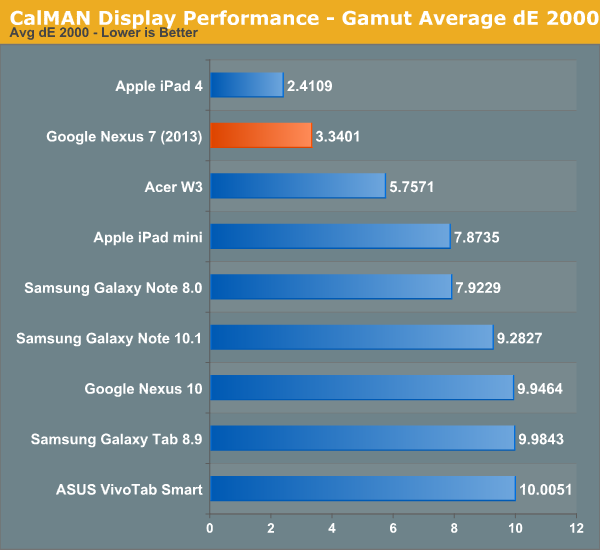
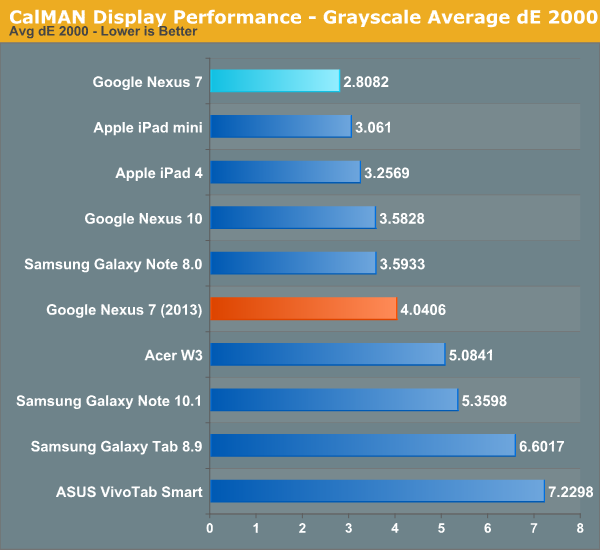
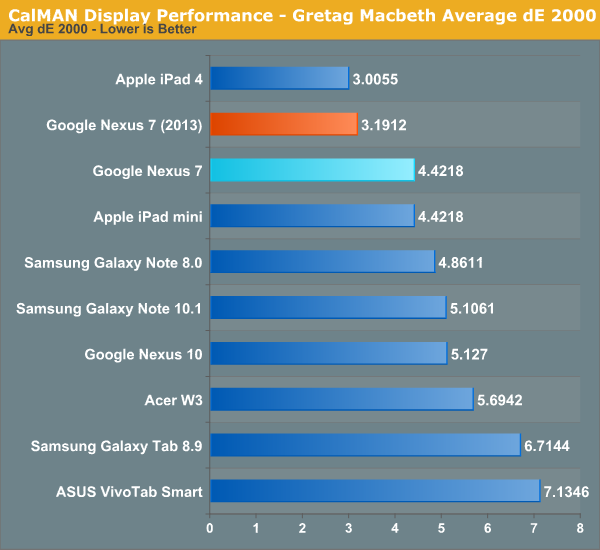
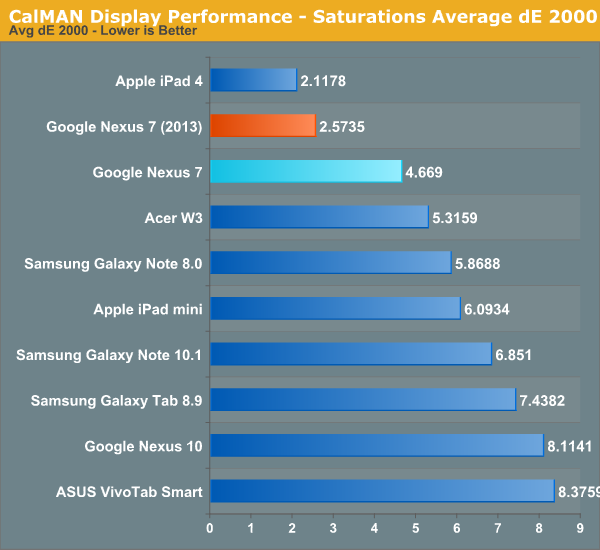
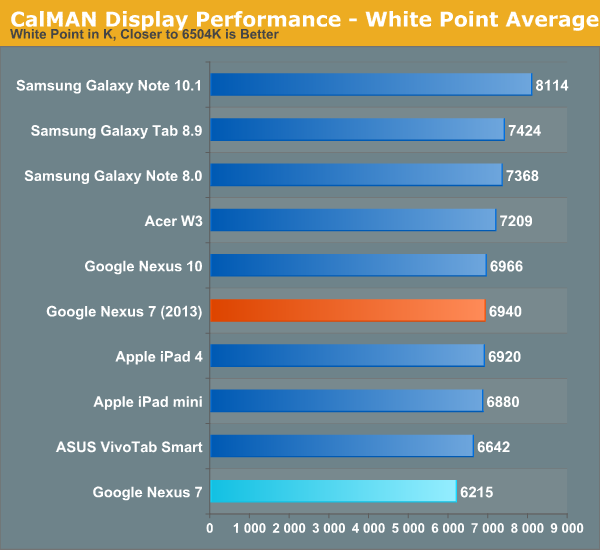
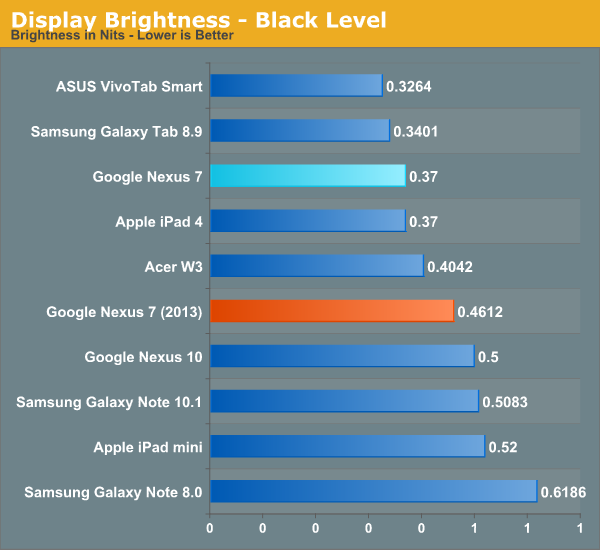
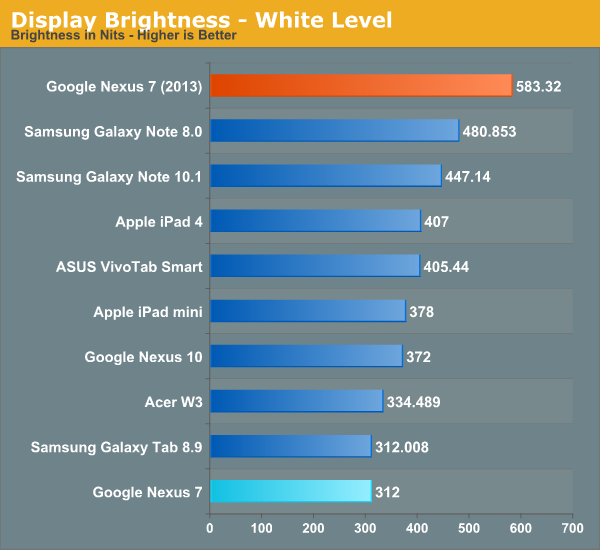
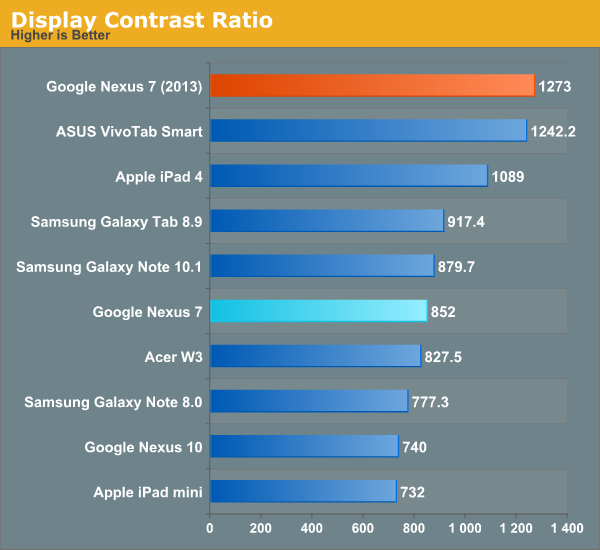
It turns out that the new Nexus 7 is actually very close to sRGB this time around, with overall gamut being just a bit bigger than the sRGB color space. In the GMB Delta-E and saturations Delta-E measures, arguably the two most relevant for color accuracy, the new Nexus 7 is second only to the iPad 4, and better than the iPad Mini in color accuracy, a significant step forwards from its predecessor.
The new Nexus 7 also goes very bright, up to 583 nits, with excellent contrast of 1273. This is again not achieved using any dynamic contrast cheating since those functions are thoughtfully disabled.
On the display side of things I’m very pleased with how far the Nexus 7 has come, and it’s obvious that display quality was a big focus for the 2013 model.















252 Comments
View All Comments
Roland00Address - Saturday, July 27, 2013 - link
The only thing this mini review is lacking compared to a normal review is the battery tests, that and the writer felt rush but Brian did a great job with such limited time.thesavvymage - Sunday, July 28, 2013 - link
Anand will personally be doing an incredibly in-depth analysis of nearly everything this tablet has to offer in the near future. You should go look up one of anand's iPad reviews, they are probably 3 or 4 times as long as this one. He does an amazing jobchrone - Saturday, July 27, 2013 - link
Great reviews as always. Does it still have transition animation micro stuttering when autobrightness is on and in outdoor?psyside1 - Saturday, July 27, 2013 - link
Can anyone tell me, is the unit tested 16 or 32GB version? i never saw clarification about it, which is the only thing missing in this review, other then that fantastic job.Also how much faster should the 32GB model be, if this one was 16GB version? (knowing flash benefit from size) 16 vs 32GB, might be nice to see for the future Anand review.
Krysto - Saturday, July 27, 2013 - link
Why would flash benefit from size? Either way, there shouldn't be major differences in speed.psyside1 - Saturday, July 27, 2013 - link
Why bigger SSD/USB drives, are always faster then smaller?Krysto - Saturday, July 27, 2013 - link
They might, but I doubt it has anything to do with the size, and more with the manufacturer's "strategy" of making higher store that is more expensive, also have higher speed.But that's like saying cameras with more MPs are automatically better because they have more MP's, when in fact they are usually better because the camera makers work in parallel to also improve the overall quality of the camera module, while increasing the MP count, too, for the next generation cameras.
Death666Angel - Saturday, July 27, 2013 - link
You should educate yourself on that one, your first statement is clearly wrong. The way SSDs get their exceptional speed is by using packages of NAND in parallel. And how many packages of NAND an SSD has directly corresponds to the size of the SSD. Look up a few reviews of SSDs on Anandtech and you will get a break-down of packages vs size, the one of the 840 EVO being a great example to study because of the inclusion of all sizes. It is not just an arbitrary decision to justify the price tag. The explanation is in the technology, not in the marketing this time.psyside1 - Sunday, July 28, 2013 - link
http://www.anandtech.com/show/6130/the-16gb-nexus-...How about you educate your self, instead of me? thanks.
Bast - Sunday, July 28, 2013 - link
Actually he's right. your link is not relevant as the eMMC devices most probably use only one chip and no parallel controller like SSDs do. In addition, in HDDs, the higher storage is because of higher densities of data on platters that rotate at the same speed as lower capacity drives which translates to higher rates.